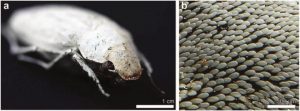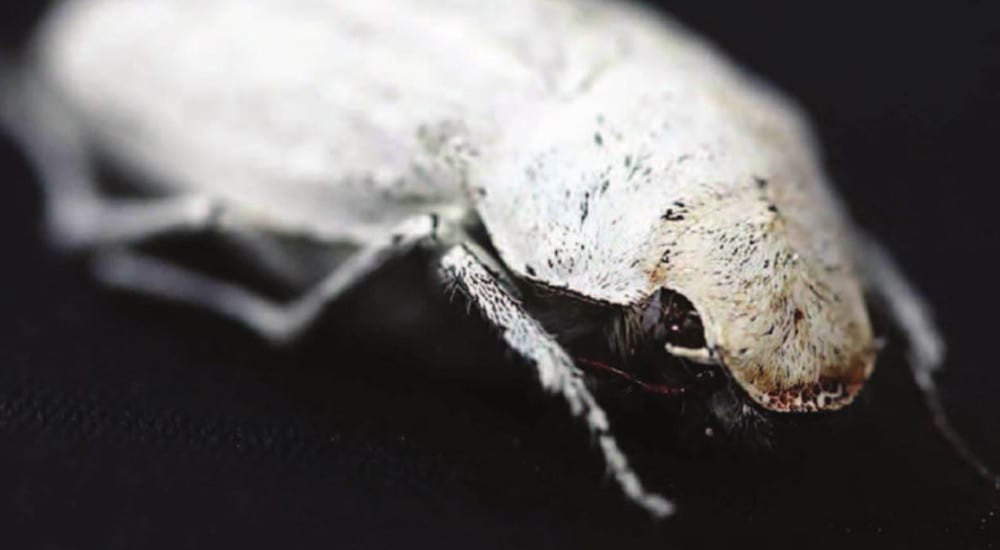Structural color arises effortlessly in nature, for example for camouflage, attraction, or as a warning, and has been evolutionary-optimized for the perfect balance of color and function. This fascinates researchers, who look to understand the underpinning geometries of such materials that influence the reflection of light.

In Advanced Materials, an international team of researchers from Switzerland, Germany, UK and USA have come together to analyze the local structure accountable for the vibrant white wings of Cyphochilus beetles, which are found extensively in Southeast Asia (see Figure (a)). Using a tomography nano cryo (“OMNY”) instrument to perform cryo-ptychographic X-ray computed tomography (cryo-PXCT), the researchers acquired quantitative structural information from the biological tissue, without damaging the structure itself—an achievement made possible by the extremely low 92 K operating conditions.
Cyphochilus beetles have an exoskeleton that is patterned entirely with single wing scales (≈200 µm in length and ≈60 µm in width) (see Figure (b)), which the researchers have characterized fully with isotropic 3D resolution of 28 nm over a sample volume of ≈350 µm3. They reveal a disordered, interconnected chitinous fiber network morphology that is responsible for one of the strongest natural scattering of incident light across the visible spectrum.
Furthermore, finite-difference time-domain (FDTD) simulations were used to measure the structure’s optical response to incident white light, revealing that the beetles have optical anisotropy, i.e., the reflectance depends strongly on the orientation of the network volume, and that the scales’ structural anisotropy reduces the thickness required for strong scattering. Compression tests showed that whiteness, i.e., scattering, reduces on compression, while stretching the structure has very little effect on whiteness quality. This confirms that the structure has, unsurprisingly, been optimized by nature.
Ultimately, the bright white wings of Cyphochilus beetles are attributed to a perfect structural balance of network density, fill fraction, high refractive index, and structural anisotropy. This knowledge could be used for bioinspired design of white reflectors used, for example, in the food industry.

















